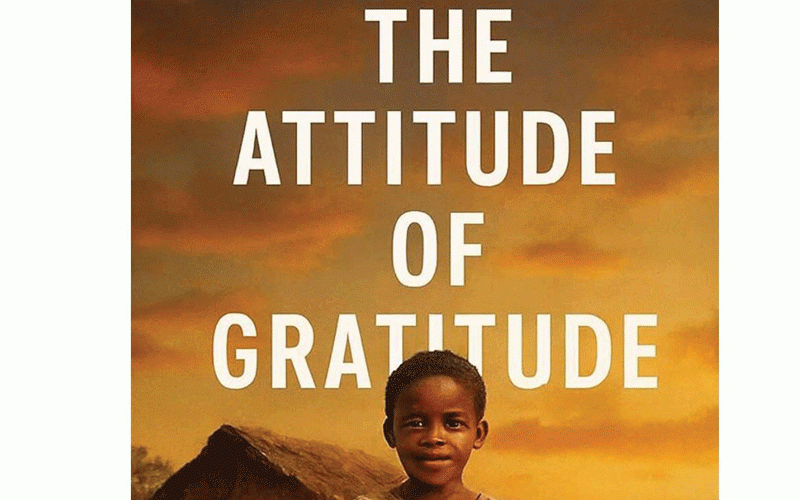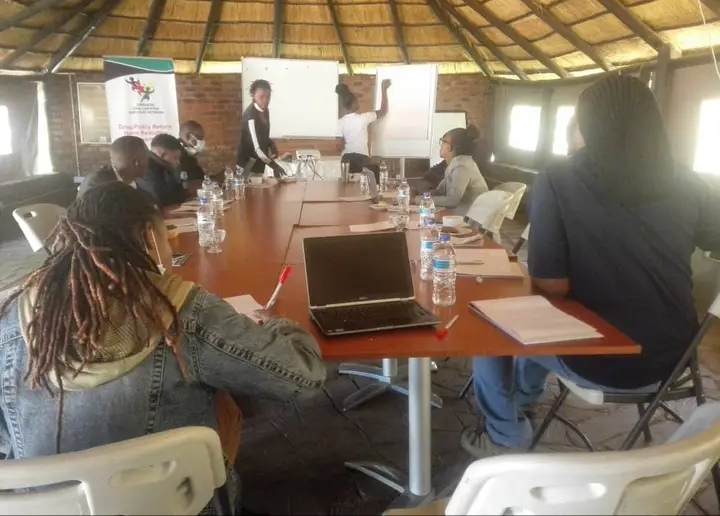
Introduction
Gerald Musyoki Paul’s The Attitude of Gratitude is a poignant and unflinching examination of human endurance in the face of neglect, betrayal, and spiritual disillusionment.
Set against a backdrop of social fragmentation and moral decay, the novel integrates the intersecting lives of Stance, an orphaned boy searching for dignity; Kellen, a survivor whose voice cuts through layers of cultural silence; Kalau, a humble herdsman whose quiet acts of sacrifice embody communal ethics; and Gregory and Selina, whose outward piety masks corrosive ambition and hypocrisy.
Through its characters and events, the novel examines not only what is said, but what is meant, juxtaposing the denotation of words with the powerful connotations they carry in lived experience. Gratitude, in this context, is not mere thankfulness but a radical reorientation of self through suffering and self-discovery. The novel does not offer easy resolutions; instead, it crafts a morally textured narrative that challenges the reader to confront the contradictions of faith, love, and leadership, while holding space for grace, however bruised or imperfect.
From grit to grace: Stance’s journey through suffering and redemption
What becomes of a child when the world forgets him? When no one listens to his prayers, when no hand reaches to hold his trembling fingers? What happens to an orphan when society sees only a burden, not a soul?
Gerald Musyoki Paul confronts these unsettling questions from the very first page of The Attitude of Gratitude, introducing us to Stance, a young orphan kneeling beneath a cold canopy of trees, barefoot and alone, each thorn that pierces his feet a cruel punctuation in the long, agonising sentence of his suffering.
The author wastes no time immersing the reader into Stance’s emotional and physical wilderness of abandonment, deprivation, and yearning.
Through narrative prose, the author captures the spiritual silence that swells when love is absent and survival is the only prayer.
However, within this bleakness pulses a raw resilience, echoing Ken Saro-Wiwa’s contention, “The hardship of living under conditions of privation breeds its form of resilience.” Stance’s journey is not just a flight from abuse; it is a passage through despair toward meaning. His escape, symbolically titled An Escape from Egypt, draws on the biblical exodus, transforming a boy’s struggle into an act of sacred reclamation. When he exclaims, “It is finally done. Oh! Hallelujah! No restriction today,” it is more than liberation from cruelty; it is resurrection, a moment where self-worth is retrieved from the ashes of pain. The narrative insists that deliverance is not confined to miracles; it can emerge from the wounded defiance of a forgotten child. Stance’s path affirms a powerful truth: pain, when fused with purpose, can be transfigured into power.
Scars and strength: Womanhood and the weight of silence
While Stance climbs from suffering to selfhood, Kellen undergoes a searing metamorphosis, a luminous, if lacerating, passage through betrayal and abuse that defines the novel’s emotional core. From a silenced daughter, she evolves into a fierce advocate for justice, navigating the wreckage of rape, familial betrayal, and an HIV diagnosis. Her proclamation, “I’m done hiding. No more silence,” marks not only her emergence from trauma, but her refusal to carry shame that is not hers to bear. In the courtroom, she declares, “I never gave consent to sex. I woke up violated, alone, and later… diagnosed with HIV,” turning her testimony into a searing cultural indictment. At that moment, she ceases to be a passive vessel of pain and becomes a vessel of truth, clad in resistance. Binyavanga Wainaina’s assertion, “You made it possible,” finds ironic reverberation in her strength reclaimed from suffering.
Above all, Kellen’s voice becomes an answer to Taban Lo Liyong’s lament that “the silence of women is the most deafening silence in African literature.” Her digital activism transforms personal agony into collective agency; she does not seek vengeance but visibility. In amplifying her voice, the narrative not only renders her pain visible but disrupts the long-standing complicity of silence. Kellen’s story is not simply one of survival; it is a radical act of narrative reclamation, a call for recognition in a world too accustomed to looking away.
Holy theatre: Gregory, Selina, and the performance of Piety
The depiction of Apostle Gregory and his wife Selina offers a compelling critique of religious leadership and complicity within faith-based institutions. Gregory, initially a gatekeeper, reinvents himself as a charismatic but manipulative preacher, establishing SARI (Sow and Reap International) Church with the help of Selina. Their partnership is marked by performative piety and institutional ambition. Selina, introduced as submissive and outwardly devoted, gradually becomes a symbolic co-conspirator in the commodification of faith. From posing beside her husband on church billboards to silently endorsing his excesses, Selina represents the often-overlooked role of women who sustain exploitative spiritual regimes through passive support or aesthetic branding.
Gregory’s leadership is characterised by theological distortion, self-enrichment, and emotional manipulation, while Selina's silence reinforces his authority. The novel exposes how religion, when untethered from ethical accountability, becomes a platform for personal aggrandizement. The fall of SARI Church and the eventual dissolution of their marriage accentuate the consequences of religious hypocrisy. Selina’s departure following revelations of Gregory’s moral failures, ranging from falsified miracles to infidelity, marks the unraveling of both spiritual pretense and marital alliance. Through these two characters, the story interrogates not only the figure of the false prophet but also the systems and individuals that enable spiritual exploitation under the guise of divine service.
The grace of giving: Kalau and the spirit of ubuntu
In clear contrast to Gregory’s religious ineptitude and manipulation, Kalau represents true generosity and care. He is an elderly herdsman who shows deep kindness by rescuing Stance from near death and going as far as selling his animals and land for money to pay for Stance’s hospital treatment.
This act is not done out of pride but reveals the strength of his character. Kalau’s home, a mix of traditional round huts and a modern stone house, becomes more than a place to live; it stands as a symbol of both cultural tradition and moral responsibility. Through Kalau, the novel shows that redemption does not always come through miracles or religion, but through simple, selfless acts of love and duty. His story reflects the African idea of Ubuntu, “I am because we are,” and challenges modern ways of thinking that focus only on individual success instead of community well-being.
As Thomas Sowell reminds us, “Virtue is not defined by the number of people who agree with you, but by your willingness to stand for what is right.” Kalau quietly lives this truth, standing for goodness even when no one is watching. More than just a side character, Kalau is the moral guide of the novel, showing how compassion and sacrifice can bring healing and hope to others in a society deeply in need of both.










